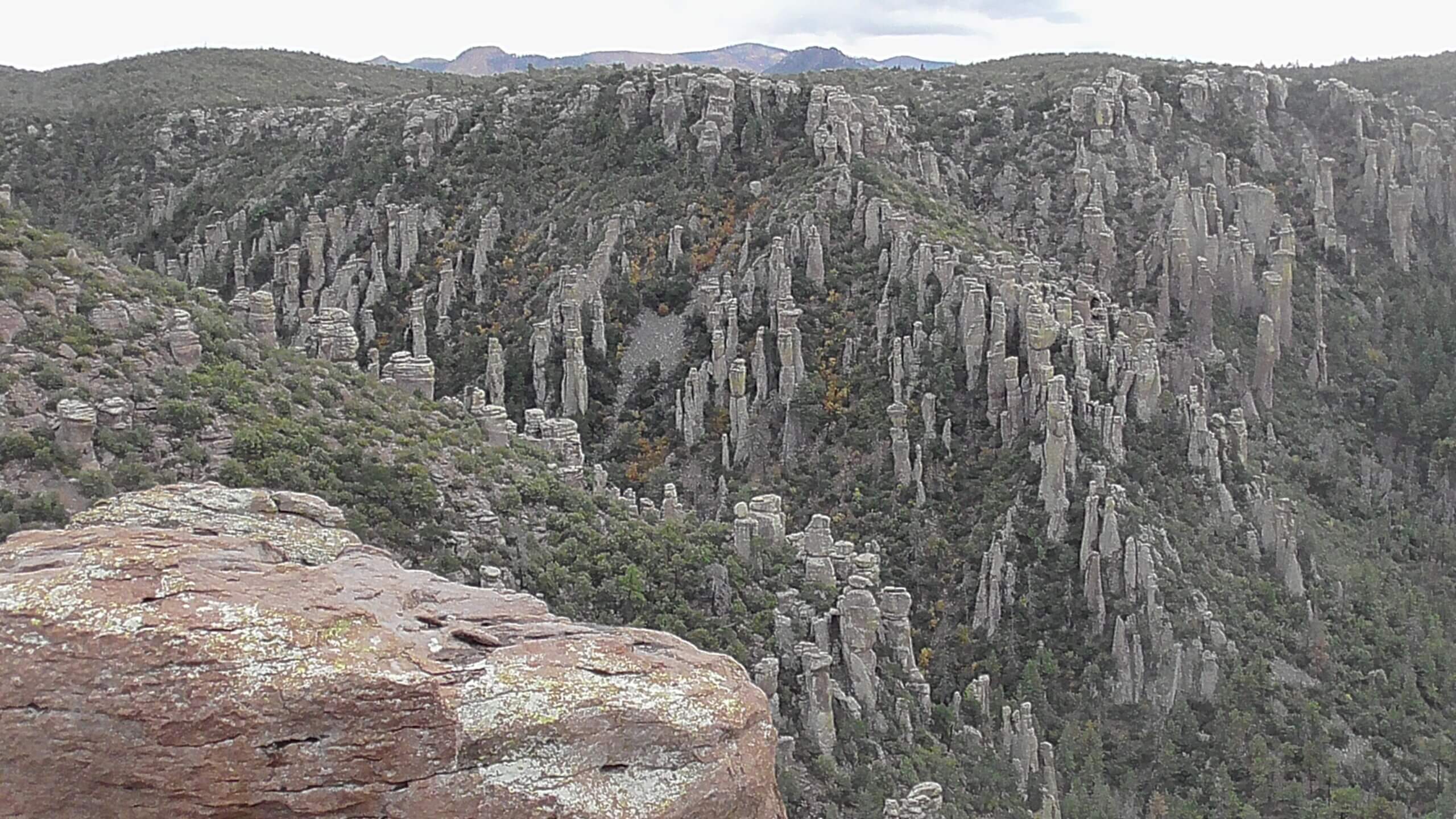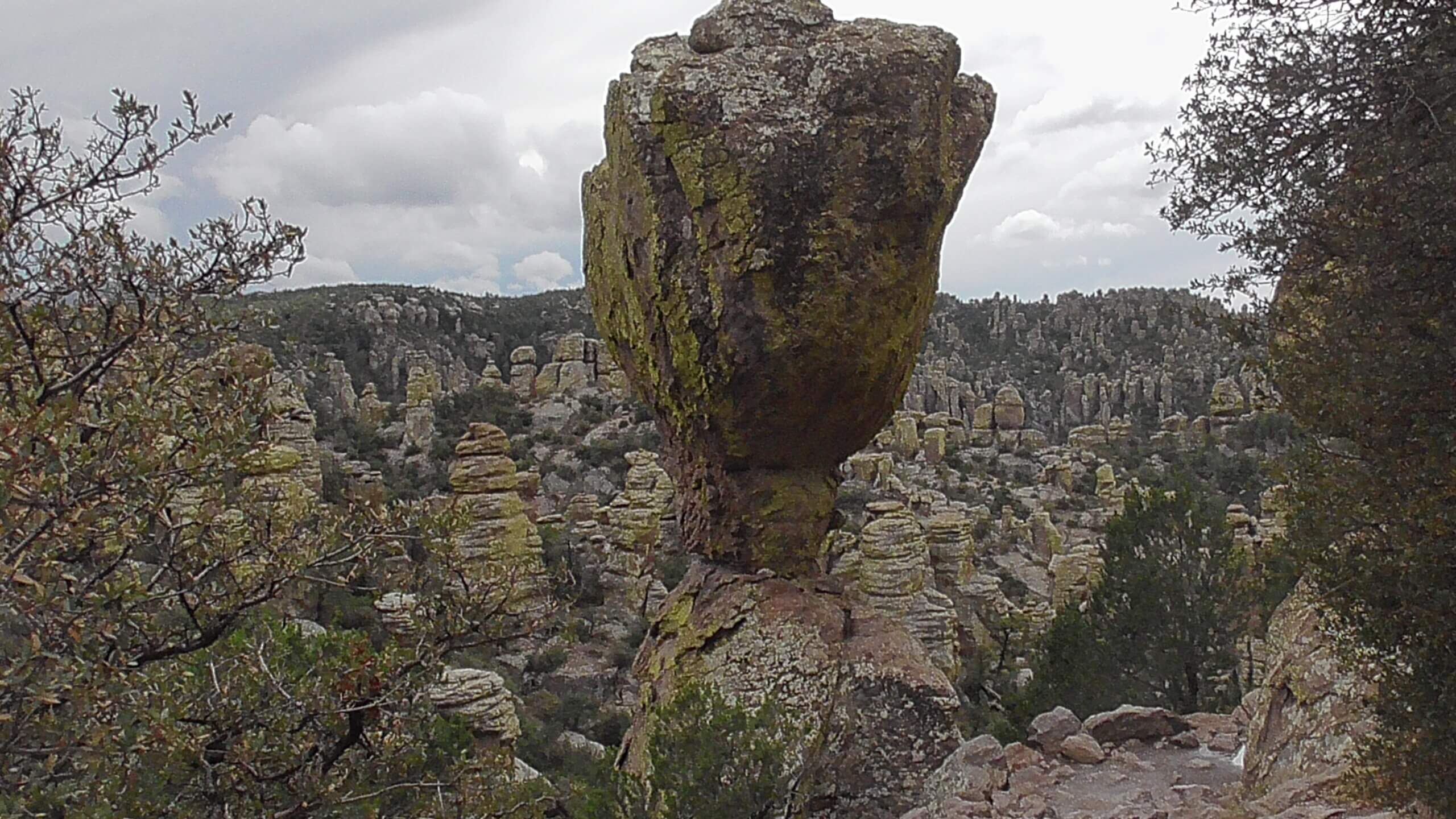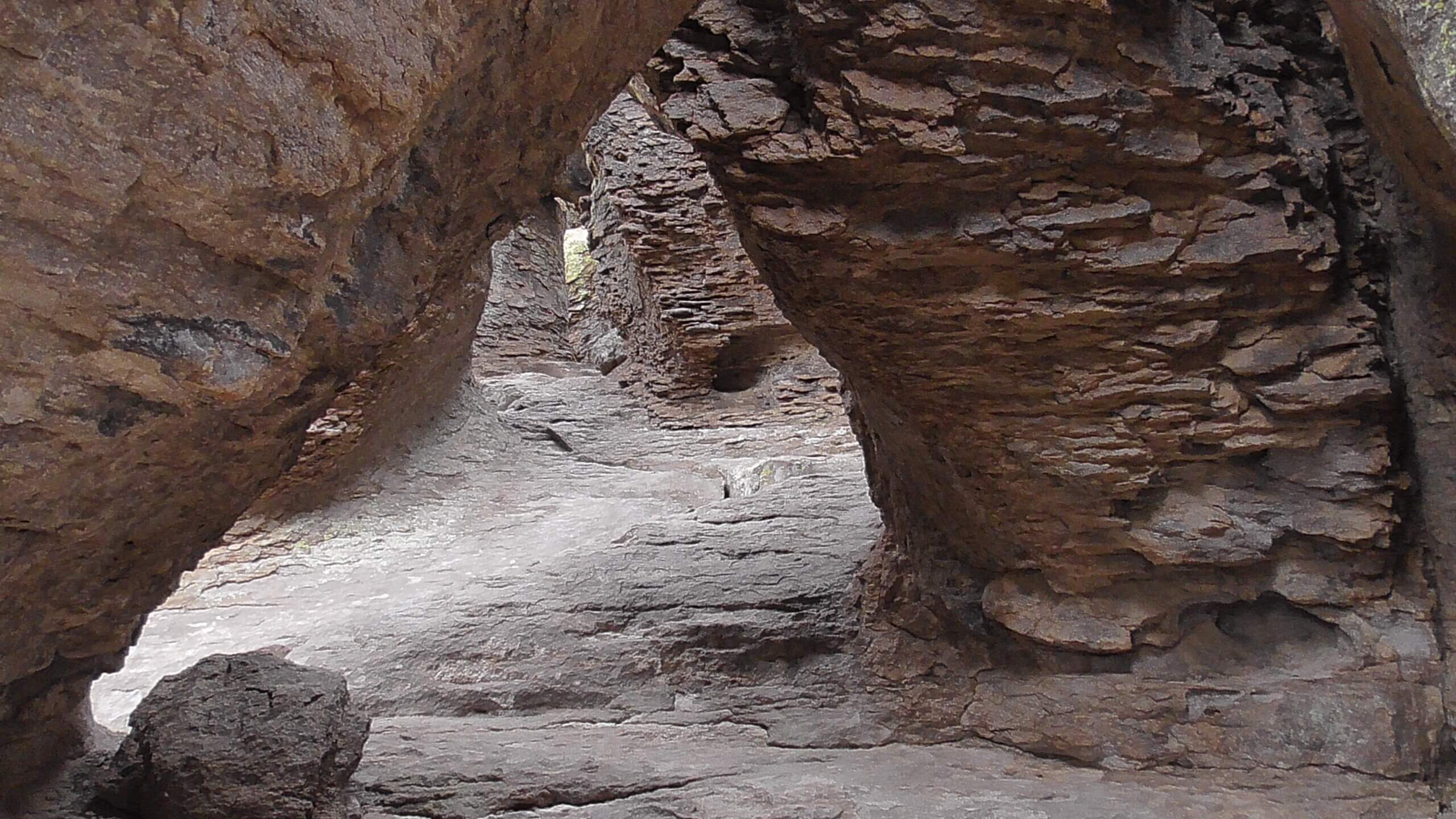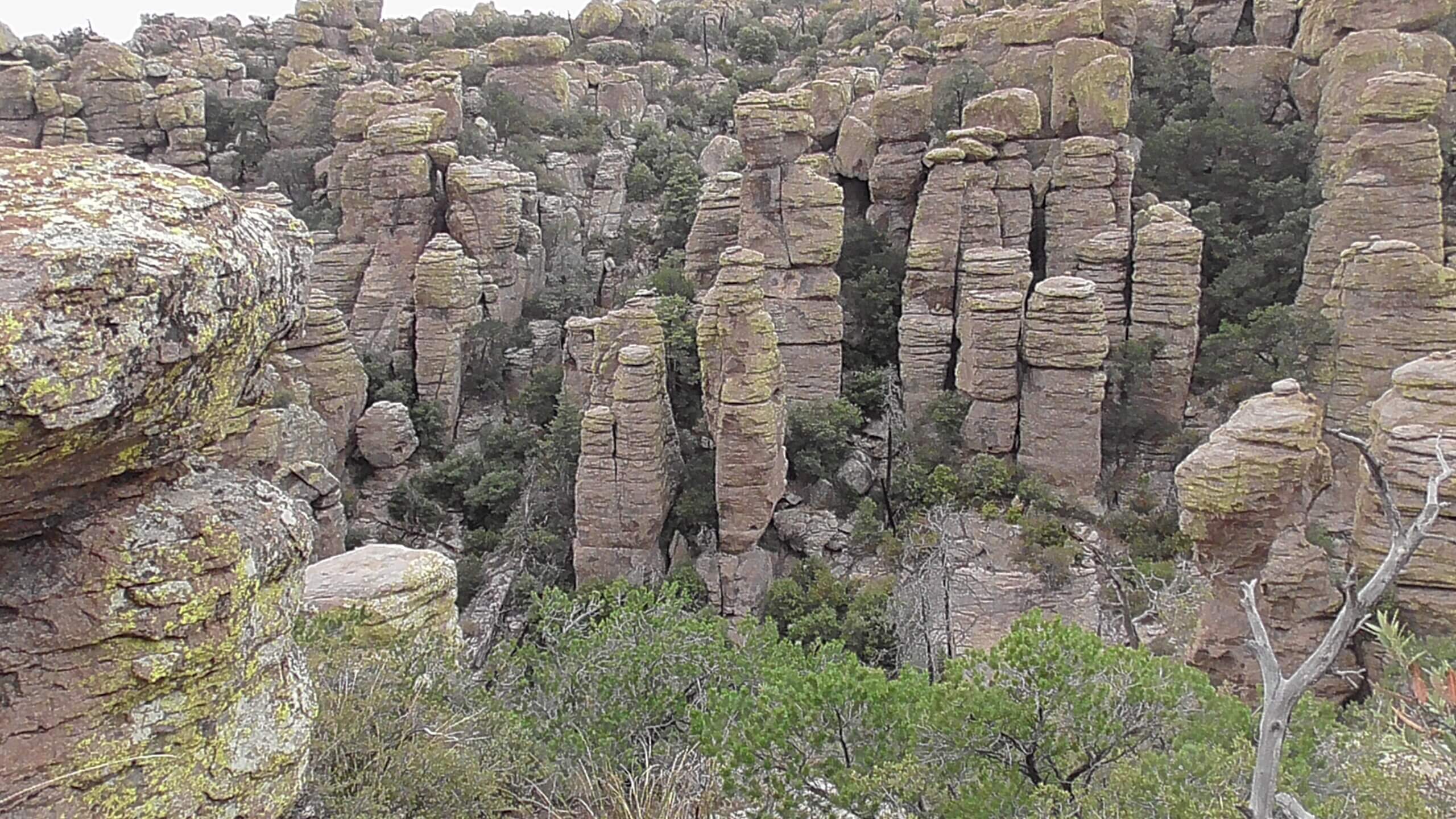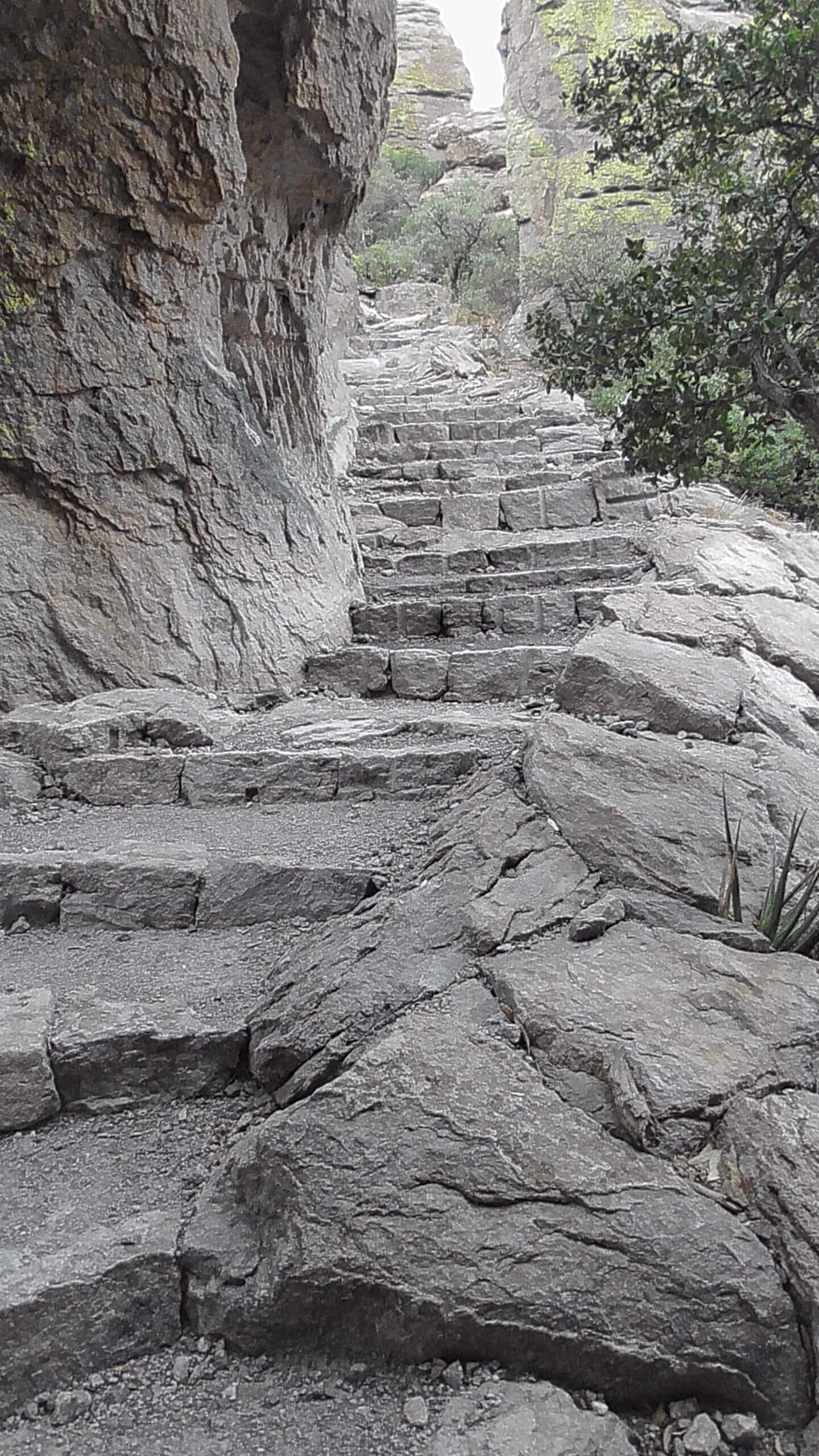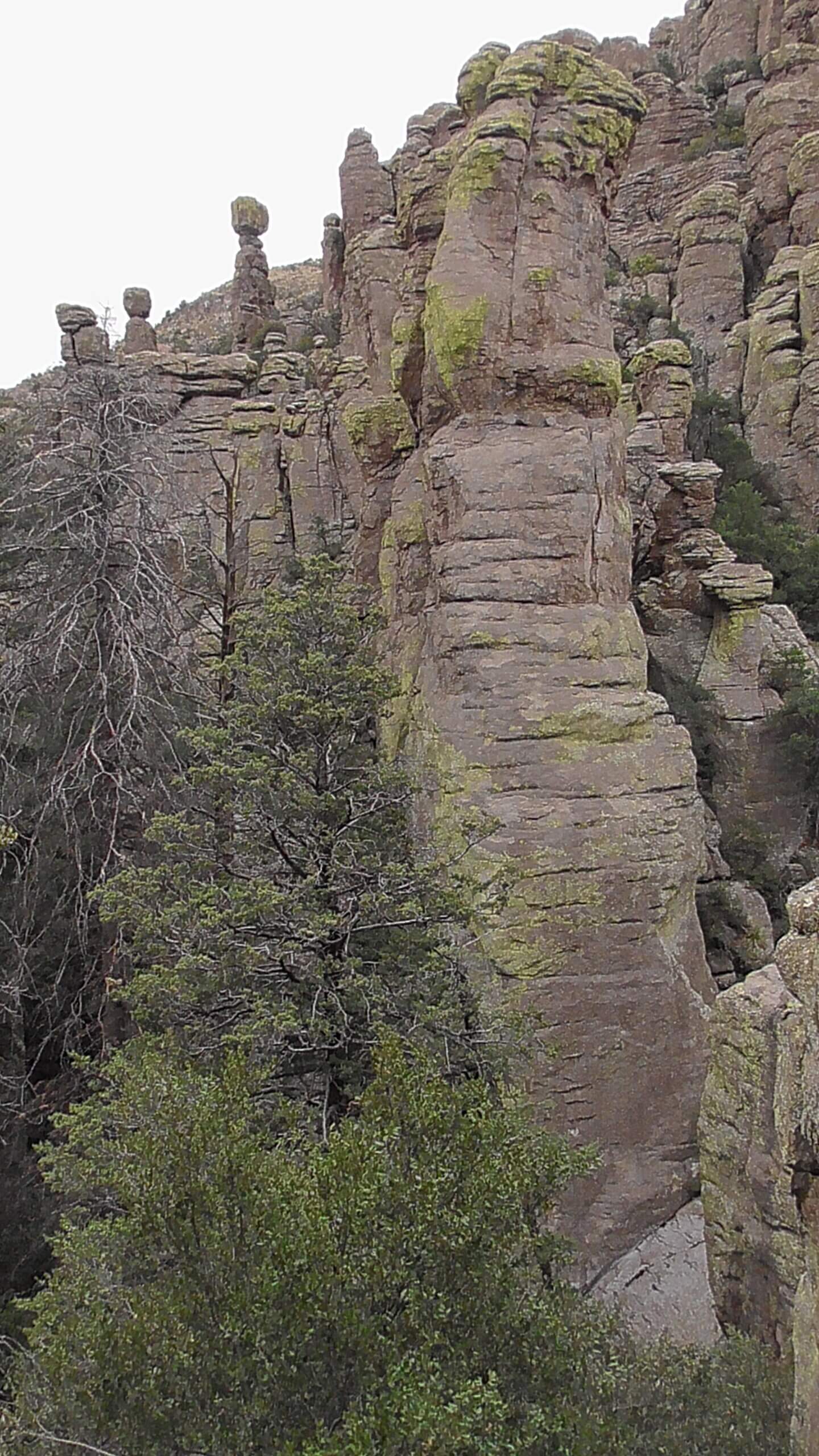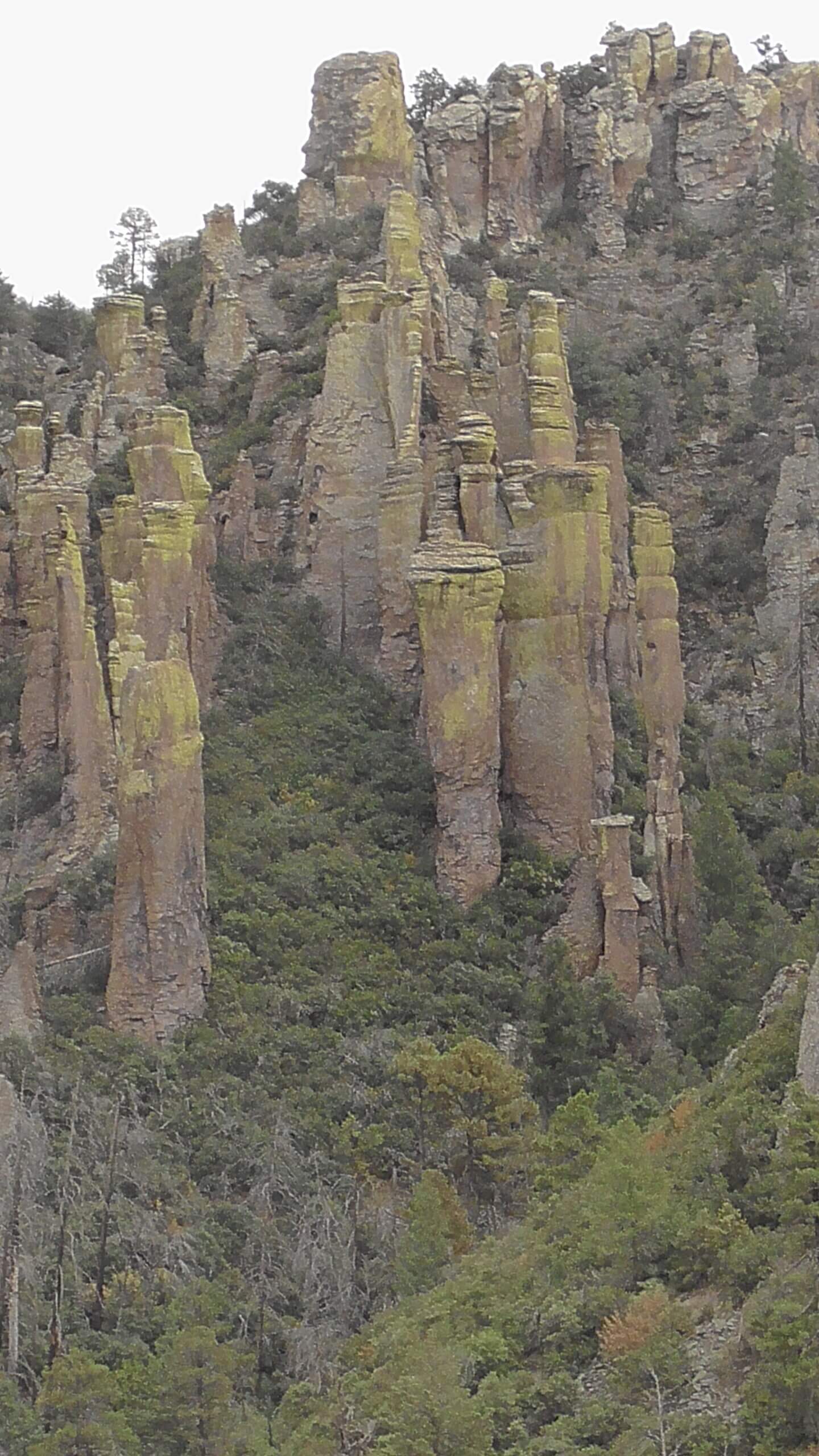Chiricahua National Monument could also be known as a “Wonderland of Rocks”. The 8-mile paved scenic drive and 17-miles of day-use hiking trails provide opportunities to discover the beauty, natural sounds, and inhabitants of this 12,025 acre site.
Although water flows only intermittently on the surface, the park contains all or parts of five major watersheds in the northern Chiricahua Mountains. Seeps and springs are vital to the survival of most faunal species, and the one wetland marsh in the monument is host to two sensitive plant species. Rich in diversity, the monument boasts many plant communities, including grasslands, deciduous and evergreen forests, scrublands, and deserts.
Many of the rocks consist of rhyolite, which comes from volcanic pyroclastic flow (think Pompeii). Most of this flow came from 10 miles away more than 25 million years ago.
Geology of Chiricahua National Monument
